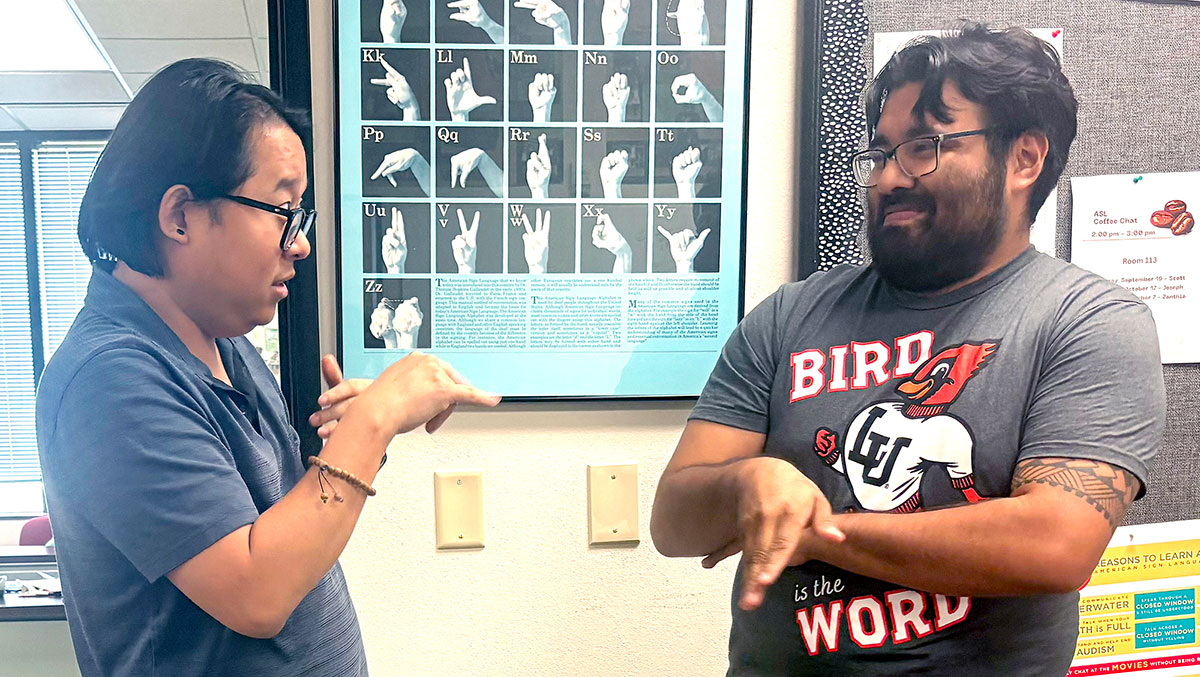
September is Deaf Awareness Month and Diane Clark, former chair of LU’s Deaf studies and Deaf education department, said there are many misconceptions about the Deaf community.
“I want people outside this department to understand Deaf people can do anything except hear,” she said. “I want people here at Lamar too be able to interact comfortably with Deaf people, and realize their strengths and abilities are equal to a hearing person on campus.”
Many in the Deaf community feel invisible and underappreciated, Andrew Ramirez, president of Signing Cardinals and an ASL major, said. The hearing community sometimes sees the Deaf’s inability to speak as a disability and instead of providing the necessary tools they are treated as if they are invisible and broken.
Clark said Deaf Awareness Month helps the hearing community recognize the experiences of the Deaf community and understand the differences in how they approach the world.
“For example, I never turn the radio on in the car,” she said. “People ask me, ‘How can you drive in the car (when) it’s so quiet?’ But I think what I really want hearing people to know is its good that you like sound, that’s fine. But you don’t need sound to be a fully functioning human being.
“All too often, when Deaf babies are born, society wants to ‘fix them’ and make them as hearing as possible. That is often very damaging to a young child. I think it’s better to accept that child as Deaf child.”
Ramirez said a lot of interpreters only focus on communication skills, like they are language robots without any Deaf culture advocacy, or even looking at the language.
“They’re just like, ‘OK, here’s English, turning it into ASL,’ he said. “(The Deaf) don’t feel that safe connection. We don’t want to feel shackled to where we’re having to obey the interpreter, because were meant to be a team and develop a relationship.”
Recently, there has been a surge the interest in learning ASL and with that there has been increased Deaf representation within media. However, some of the representation is seen as inherently disrespectful, Christo Budidharma, graduate student and instructor, said.
The movie “CODA” is about a hearing girl who is a “child of Deaf adult.” However, Budidharma said the film is not an accurate representation of a coda because the lead actress was not a coda.
“They do have deaf actors in that movie, but to have an actual coda playing the role of the CODA in the movie, you would have to find an actor or actress who also has deaf parents and so grew up as a CODA to play the CODA.” Budidharma said.
With the surge of interest in ASL, members of the hearing community often use YouTube tutorials to learn the language but often this results in the wrong signage.
“Some people watch YouTube, and think they’re learning ASL, but really what they’re doing is learning signs and they’re putting them in English word order, and it’s like, you’re not really learning ASL,” Budidharma said. “If you want to learn ASL, you’ve got to really get involved in it. Maybe take some college courses.”
Budidharma said some people think sign language is easier to learn than spoken.
“It depends on how you look at it,” Budidharma said. “Some people look at a spoken language and think it’s more complicated and more complex than a signed language — but they’re wrong. There’s no difference between learning sign language and spoken language. Just don’t learn it from TikTok and don’t learn it from YouTube. Take classes.”
Ramirez said the Deaf studies and Deaf education staff hope the younger generation of Deaf students will feel encouraged to stand up for themselves and fight for equality and inclusion in society.
“We still have a lot of barriers, and we will forever have barriers,” he said. “We want equality and people still see us as lesser than. Today, we’re still fighting to become successful, to become equal to the hearing community, to have equal access, to have support systems similar to what the hearing community has.”
